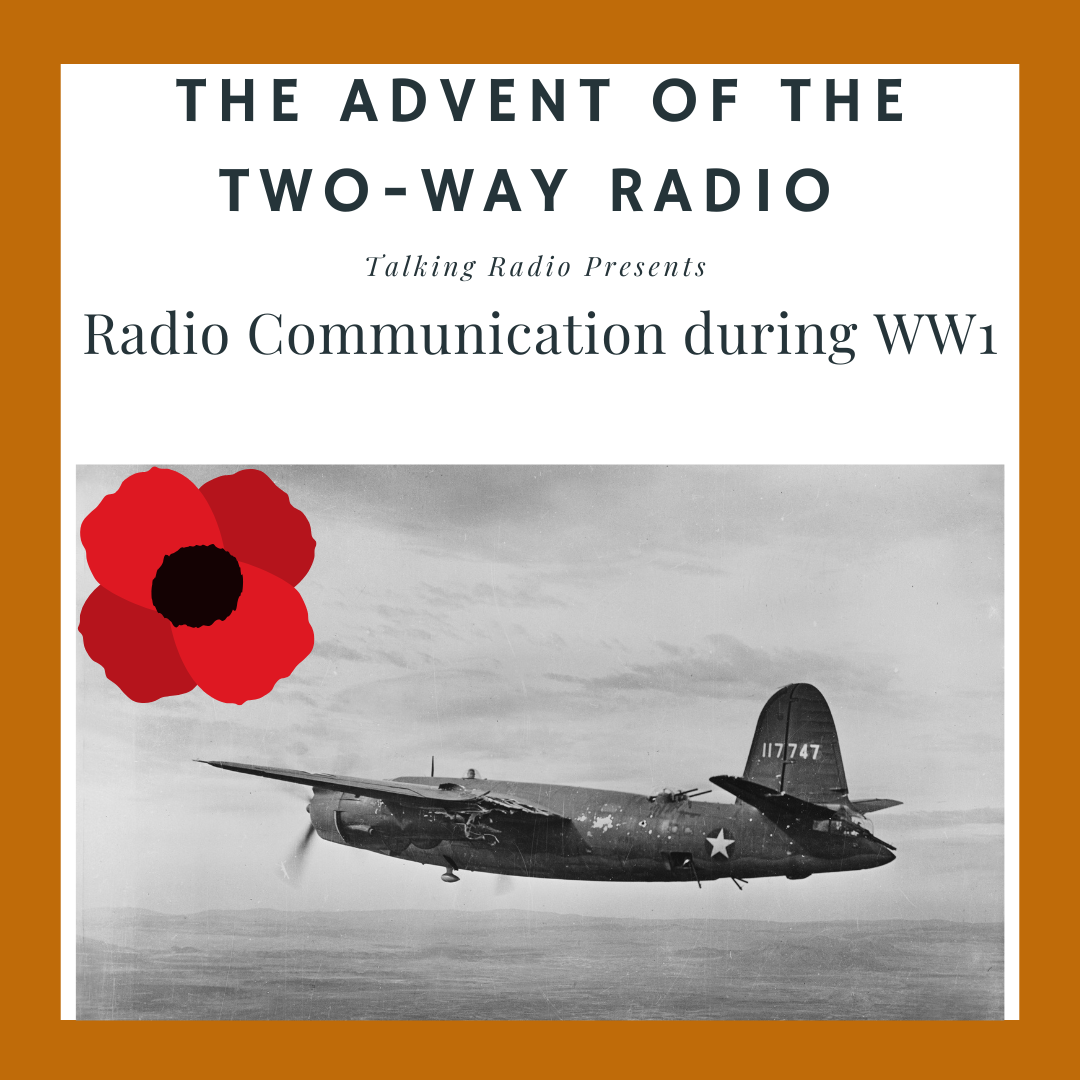
THE ADVENT OF THE TWO-WAY RADIO
Dylan KemloDuring WWI, two-way radio communication was in its infancy stage. At that time, radio technology was limited to Morse code based telegraphy rather than voice communication, as voice-capable radio transmitters were not yet fully developed. Equipment that resembled the concept of two-way radios included:
- Spark Gap Transmitters: These were the primary type of radios used in WWI. They transmitted coded messages (typically Morse code) by creating electromagnetic pulses or "sparks". The military used these transmitters to send messages over relatively short distances. However, they were noisy and had limited range and precision.
- Wireless Telegraphy: Radios were used primarily on ships and, to some extent, in airplanes. The British, French, Germans, and others used wireless telegraphy for naval communication, coordinating fleet movements, and tracking enemy ships. These communications were crucial for naval intelligence but could be intercepted by the enemy.
- Early Field Radios: Portable radios were developed for the battlefield. However, they were large, heavy, and often unreliable in field conditions.
1943 (in and around) saw the introduction of the best example of a two-way radio: the walkie-talkie. However, the walkie-talkie was very limited in range and would require additional resources to be of any value, particularly in an emergency situation.
In order to improve on the range of a two-way radio, utilizing the walkie-talkie concept, trials were conducted and VHF (Very High Frequency) was adopted as part of WWII’s strategy to increase reliability and range for the armed forces. After the war, VHF technology quickly spread to civilian applications which included commercial radio broadcasting, Maritime, Aviation and Public Safety.
Since the early 1950`s to the present date, the two-way radio has seen remarkable advancements in technology, which now includes communication in numerous selected frequency bands including VHF, Ultra High Frequency (UHF) and High Frequency (HF).